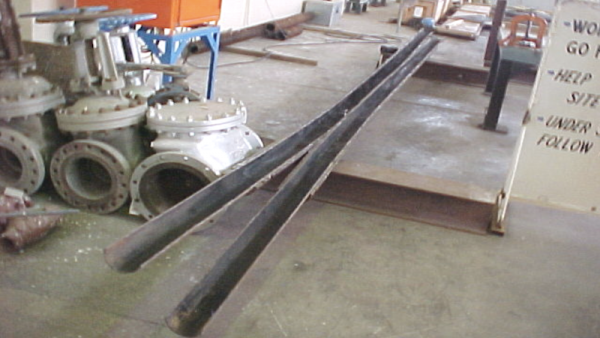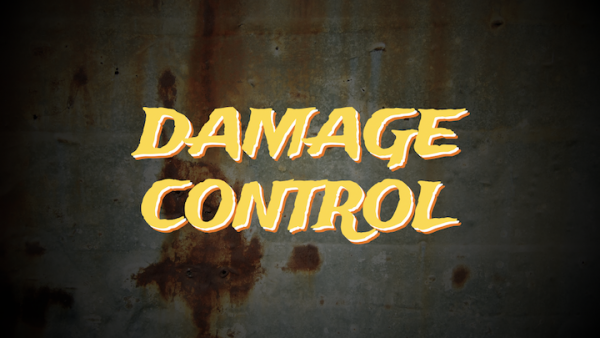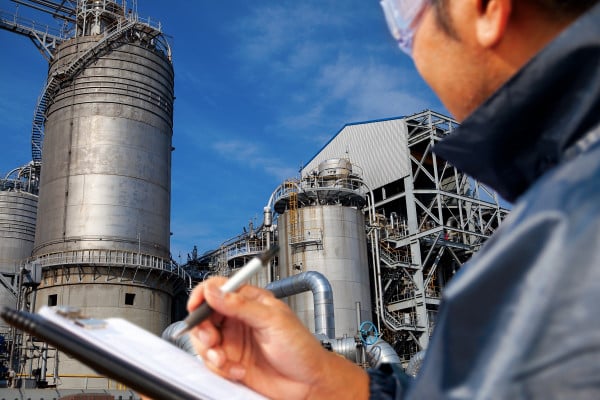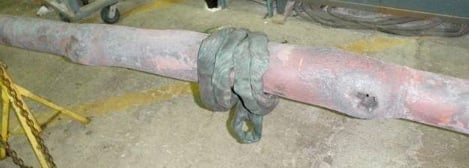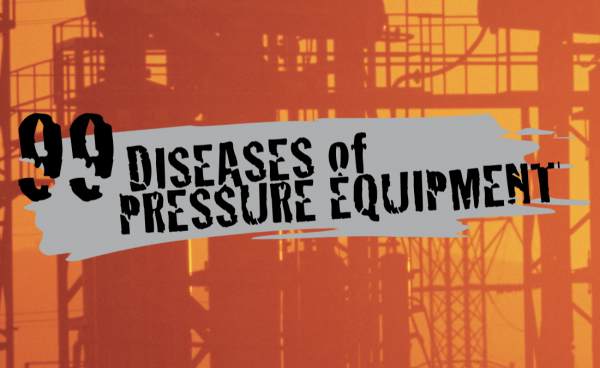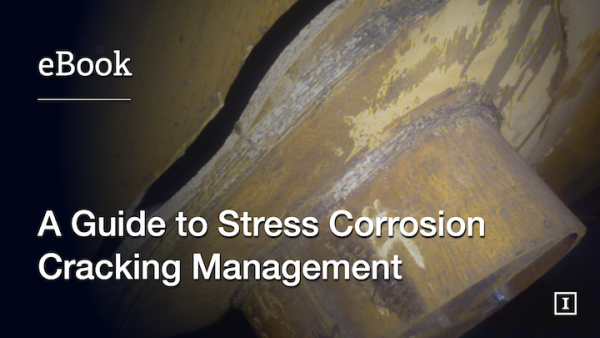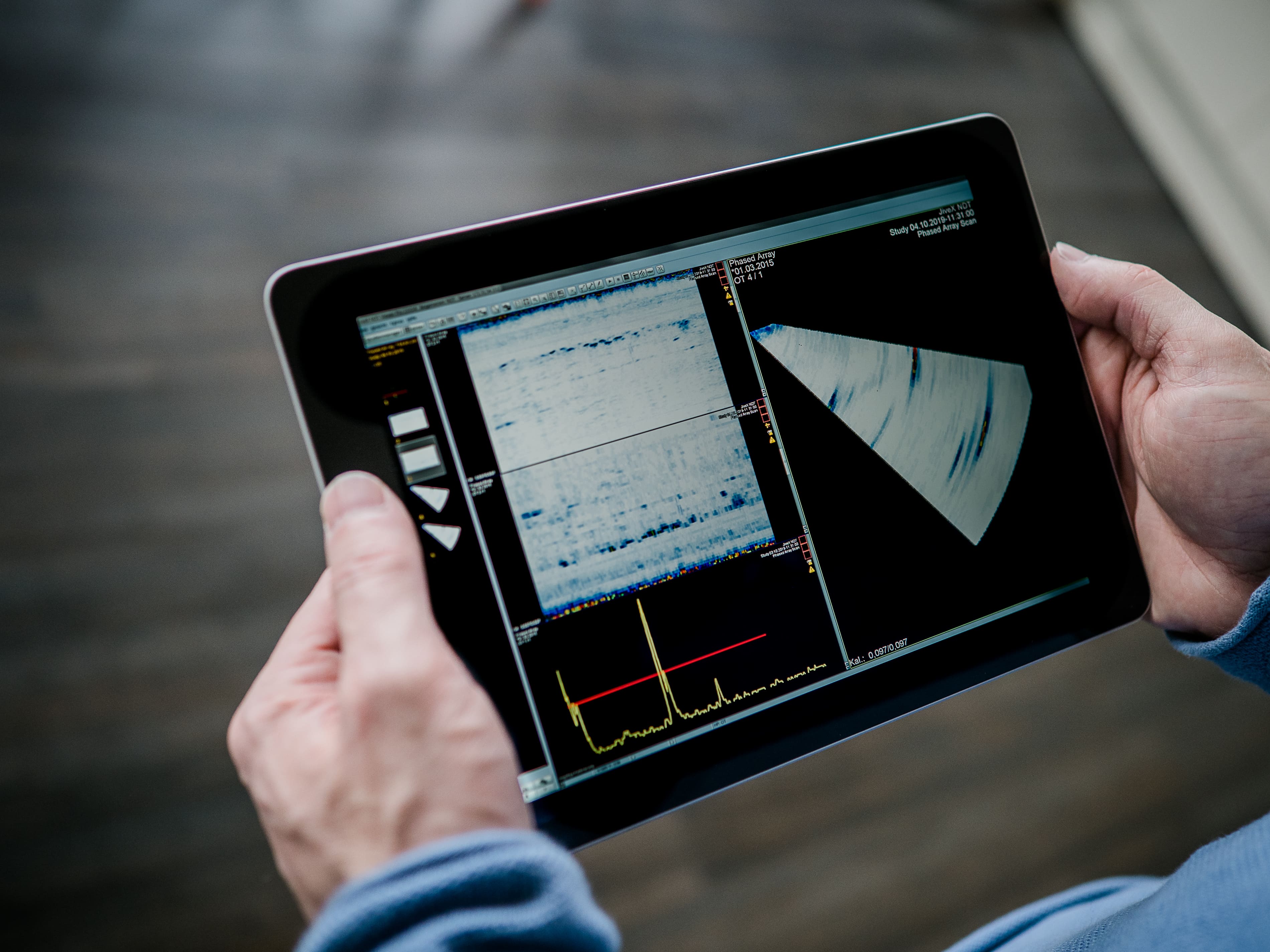Stress Corrosion Cracking (SCC) is a slow progressing cracking mechanism that can affect metals and other materials under sustained tensile stress (applied or residual) in corrosive environments (aqueous or gaseous). Stress corrosion cracking is characterized by subcritical crack propagation due to the combined simultaneous interaction of mechanical stress and environmental exposure. Neither of these factors acting independently or alternately will result in SCC, however they may cause other types of material degradation.
There are many forms of SCC that typically afflict pressure equipment in the oil refining, petrochemical, and other heavy processing industries, including but not limited to:
- Amine Stress Corrosion Cracking
- Ammonia Stress Corrosion Cracking
- Carbonate Stress Corrosion Cracking
- Caustic Stress Corrosion Cracking
- Chloride Stress Corrosion Cracking
- Polythionic Acid Stress Corrosion Cracking
While the damage morphologies of these different forms of SCC are frequently similar in nature, their propensity to develop in pressure equipment is dependent on many specific fabrication and process operating variables, such as material properties and chemistry, weld procedures, weld geometry, weld deposit and heat affected zone (HAZ) hardness/microstructure, original heat treatment, external environmental conditions, process stream composition, pH, temperature, operating stress level, and proximity to local stress concentrations. In general, the often-confounding influence of these different variables on SCC susceptibility and on markedly unpredictable crack propagation rates, makes the various forms of SCC notably complex and difficult to manage in aging components. Consequently, equipment failures due to SCC continue to plague numerous industries, highlighting an overall lack of understanding and awareness of these complicated damage mechanisms in many cases.
Successfully identifying the common characteristics of SCC is an essential first step in reasonably managing the risk associated with a potential in-service leak or even a sudden catastrophic fracture or rupture scenario for pressure equipment. Brief descriptions of the various forms of SCC are included below. For a more detailed review of each form of SCC, including key damage characteristics and critical factors leading to their development, please visit their individual Integripedia pages.
Forms of Stress Corrosion Cracking
There are several common forms of SCC, including but not limited to:
Amine Stress Corrosion Cracking
Amine Stress Corrosion Cracking, often referred to as alkaline SCC or simply amine cracking, is a cracking mechanism caused by the combined effects of an aqueous alkanolamine solution (typically used to absorb H2S and/or CO2 from gaseous or liquid hydrocarbon process streams) and the presence of either applied or residual tensile stress. Amine SCC is typically branched and intergranular in nature, and usually occurs near welds in carbon and low-alloy steels, especially in equipment that was not subject to stress relief. In general, amine unit equipment such as contactors, regenerators, absorbers, strippers, heat exchangers, filters, and piping should be routinely scrutinized and inspected for in-service amine SCC, especially if these components are not stress relieved.
Ammonia Stress Corrosion Cracking
Ammonia Stress Corrosion Cracking is a cracking mechanism caused by the combined effects of an ammonia environment and the presence of either applied or residual tensile stress. Ammonia SCC is most prevalent in carbon steel (especially high-strength steel) equipment in anhydrous ammonia service or in copper-zinc alloys, such as admiralty brass or aluminum brass, in aqueous ammonia environments (or process conditions that contain ammoniated chemical compounds). Ammonia SCC is usually either transgranular or intergranular in copper alloys, and more intergranular in nature for carbon steels. In general, ammonia storage tanks, piping, and related components in ammonia refrigeration units are particularly susceptible to ammonia SCC damage. Additionally, ammonia may be present in cooling water or steam condensate in boiler feedwater systems due to chemical treatments, or be present in certain process streams either as a contaminant or an acid neutralizer, thereby introducing the risk for ammonia SCC.
Carbonate Stress Corrosion Cracking
Carbonate Stress Corrosion Cracking, often simply referred to as carbonate cracking, is a cracking mechanism caused by the combined effects of the presence of carbonates and either applied or residual tensile stress. Carbonate SCC is a form of alkaline SCC that occurs in carbon and low-alloy steels in process environments containing a free water phase with carbonate ions and some amount of H2S. Typical damage morphology of carbonate SCC involves surface breaking cracks, often characterized by small, spider-web type cracking that often initiates at weld defects. Carbonate SCC typically occurs in oil refinery fluid catalytic cracking units (FCCU) and sour water stripper units.
Caustic Stress Corrosion Cracking
Caustic Stress Corrosion Cracking, sometimes referred to as caustic embrittlement (although it is not technically an embrittlement damage mechanism), is a form of degradation caused by the combined effects of a caustic environment and either applied or residual tensile stress. Caustic SCC is characterized by surface-breaking crack-like flaws that most often occur adjacent to non-PWHT welds in pressure equipment exposed to caustic (e.g., caustic soda or caustic potash). Carbon, low-alloy, and 300 series stainless steels are particularly susceptible to caustic SCC, while nickel base alloys are generally more resistant, although not entirely immune. Cracking in carbon steels is usually intergranular, although in rare cases, it can be transgranular, and it tends to exhibit multiple, oxide-filled cracks. In 300 series stainless steels, cracking is most often transgranular, and it can be difficult to distinguish from chloride SCC.
Chloride Stress Corrosion Cracking
Chloride Stress Corrosion Cracking (Cl-SCC) is a cracking mechanism caused by the combined effects of tensile stress (applied or residual), temperature, and an aqueous chloride environment. Cl-SCC is characterized by brittle looking surface cracks with many branches. The cracking is usually transgranular, but in sensitized 300 series stainless steels it can be intergranular. Austenitic (e.g., 300 series) stainless steels are generally most prone to Cl-SCC, and while duplex stainless steels and nickel base alloys are typically more resistant, they are not strictly immune (nickel content of the alloy has a notable effect on overall resistance). Carbon steels, low alloy steels, and 400 series stainless steels are not susceptible to Cl-SCC. Similar to other SCC damage mechanisms, non-PWHT weld regions are usually the most susceptible to Cl-SCC damage due to elevated tensile residual stresses, and cold worked components such as expansion bellows are areas of concern due to residual plastic strains. Other common locations that tend to exhibit Cl-SCC include water-cooled condensers and crude tower overhead condensers.
Polythionic Acid Stress Corrosion Cracking
Polythionic Acid Stress Corrosion Cracking (PASCC) is a form of intergranular stress corrosion cracking that usually occurs in sensitized austenitic stainless steels and some nickel base alloys when sulfide scale on the steel surface is exposed to oxygen and moisture. The most common source of oxygen is the ingress of air when process equipment is opened for cleaning, inspection, or maintenance activities during a planned unit outage. PASCC usually occurs during equipment start-ups or shutdowns, and cracking can propagate rapidly through-wall in a matter of hours under the right conditions. Equipment most susceptible to PASCC includes fired heaters burning oil, gas, coke and most other sources of fuel (containing sulfur), heater tubes, hot feed/effluent exchanger tubes, and bellows in hydroprocessing units. Crude/vacuum and coker unit piping have also exhibited PASCC and severe cases have been found in FCC units (e.g., air rings, plenums, slide valves, cyclone components, expansion joint bellows and piping).
SCC Inspection Considerations
In general, identifying the specific form(s) of SCC likely to afflict a given piece of equipment can streamline inspection efforts because critical areas can be strategically targeted. Additionally, the overall inspection strategy should consider the consequence of failure and the feasibility of component repair or replacement. Because of the fundamental damage characteristics of SCC described above (surface breaking cracks typically near welds), the following inspection methods are commonly utilized to identify and measure crack propagation:
- Visual Inspection
- Surface inspection using Liquid Penetrant Testing (PT) or Wet Fluorescent Magnetic Particle Testing (WFMT)
- Volumetric inspection using Radiographic Testing (RT) or Ultrasonic Testing (UT), including Shear Wave (SWUT), Phased Array (PAUT), and Time of Flight Diffraction (TOFD).
- Acoustic Emissions Testing (AET)
- Eddy Current Testing (ECT)
Mitigating SCC Damage
There are subtle nuances associated with the various forms of SCC discussed herein. While many of the damage characteristics and critical factors influencing SCC susceptibility are similar, the underlying chemical reactions and process conditions that promote crack initiation and propagation are distinctly unique. There are also perceptible material property effects on damage susceptibility and progression. Understanding these nuances and leveraging appropriate and practical inspection methods represents a crucial first step in establishing robust mechanical integrity programs that consider all potential forms of SCC. In general, successfully managing SCC in aging equipment requires effective collaboration between materials/corrosion engineers, maintenance/reliability personnel, plant inspectors, and operators/process engineers.
References
- Jones, R.H. and Ricker, R.E., 1992, “Mechanisms of Stress Corrosion Cracking,” ASM International, Materials Park, Ohio.
- Prueter, P., 2022, “Damage Control: Stress Corrosion Cracking Detection,” Inspectioneering Journal, 28(2), pp. 45-52.
Relevant Links
Topic Tools
Share this Topic
Contribute to Definition
We welcome updates to this Integripedia definition from the Inspectioneering community. Click the link below to submit any recommended changes for Inspectioneering's team of editors to review.
Contribute to Definition


